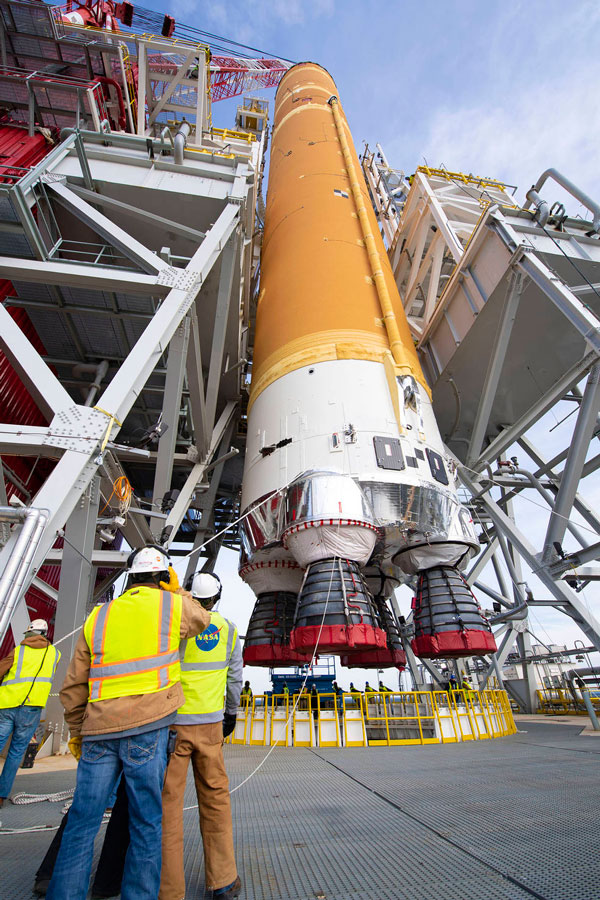Boeing and NASA Prepared to Resumes Testing for Space Launch System When Space Center Re-Opens
By Boeing // May 6, 2020
Space Launch System stage controller and avionics ready for next test phase

BREVARD COUNTY, FLORIDA – Boeing and NASA Space Launch System (SLS) teams recently completed a rigorous avionics review, ensuring that the program will be prepared to resume testing of the first SLS core stage when NASA reopens Stennis Space Center, where the core stage waits in its B2 test stand.
The review validated that the avionics are ready to play their part in the ultimate Green Run test, which one SLS leader compares to a symphony performance.
“The propulsion systems make up the orchestra, while avionics is the conductor, the stage controller command-and-control system is the conductor’s baton, and the music is the roaring engines of a perfect hot-fire test,” explained Boeing SLS Avionics Director Kevin Fogarty, when asked to provide an analogy for the complicated systems at work.
Fogarty’s team successfully completed the final Stage Controller Readiness Review with NASA, confirming that the stage controller will be ready to work when all the SLS avionics hardware and software are ready to orchestrate the first phase of Green Run testing.
Phase 1 will fully exercise the Avionics Power On sequence and confirm proper thrust vector control, main propulsion system operation, and safing checks.
Next, the program will transition to the Phase 2 test period, which uses actual propellants for tests including a Wet Dress Rehearsal and the eight-minute firing of the stage’s four RS-25 engines.
Leading up to the milestone was a robust test campaign in the NASA Marshall Space Flight Center labs, during which the Boeing and NASA teams used a flight-like representation of the avionics suite and stage controller, including 15 simulated test operator console stations, and representations of the B2 test stand and the Artemis I core stage.
Stage controller software development is based in Titusville, Florida, headquarters for Boeing’s Space and Launch division.
“We needed to ensure that the avionics validation test phase exercised the systems with the most comprehensive and realistic representation of the Green Run hot-fire, both nominal [ideal situation] and off-nominal [not routine] scenarios,” Fogarty said. “We want to be ready for all potential scenarios during the test.”

The Green Run hot-fire test requires a highly automated software sequence known as the Terminal Countdown Sequence (TCS), which transitions control of the test execution from the human operators to both ground and flight computers.
For the big day, Green Run Application Software – a variant of the NASA-produced flight software that will fly the SLS rocket – will be loaded onto the core stage computers, where it is integrated with the flight avionics and stage controller systems.
Each of the flight computers shares data from subsystems and sensors, and “votes” on its validity, before executing commands to control the rocket.
“It’s like building a giant remote control for launch,” explained Boeing engineer Kim Bryner, who manages stage controller development from Florida.
Avionics teams in Florida and Alabama are now completing final software development and test work on Phase 2 TCS functionality to support the Wet Dress Rehearsal and hot-fire test.














